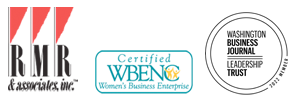Did you catch RMR’s recent column in Washington SmartCEO Magazine? If not, the article can be found below. You can also find all of RMR’s articles from the magazine here.
Finish this sentence: “Certs with Retsyn gives you ___, ____, _____ ______ ___ ____.”
If you were able to supply the missing words “two, two, two mints in one,” you are a living, breathing example of the effectiveness of advertising creative. This Certs breath mint ad ran decades ago, yet most people can still spout it off as if they had just viewed it this morning. This creative scored well because the message was concise, memorable, benefit-orientated, frequent and distinctly unique.
Of those five attributes, being distinctly unique is the most important. “We’re fighting for attention in a noisy world,” says RMR President Robyn Sachs. “Surveys show that readers, viewers and listeners give you only two-seconds to gain their attention. If you can’t stop the reader, viewer or listener, you’ve wasted your investment and you’ve communicated nothing.”
Before you start crafting jingles or designing creative, it’s best to clearly define exactly what advertising truly is. Advertising is controlled communications designed to increase profits. Properly done, good advertising will increase brand preference, increase product trial and increase sales leads. All of which are designed to create more sales.
According to the Small Business Administration, the leading cause of business failure is “not having a sufficient number of buyers to produce a consistent profit.” “It’s very simple,” says Sachs, “if you can’t sell your product over time, you won’t be able to keep your doors open. As exciting as it seems, advertising is actually a very sober art and science. It’s a means to an end, and that end is to increase profits.”
The pathway to achieving that end starts with answering the following three questions:
* Who is my target market? By defining who your buyers are, you’ll be able to select the most appropriate media vehicle (print, television, radio, Web, Social Media, etc.) to reach them. The media vehicle determines the shape of the creative message.
* What is it they want? Research your prospective market as thoroughly as your budget allows. In many cases, you can negotiate free, or reduced-cost studies of your market from the media vehicle you pay to broadcast your advertising. “Customers don’t buy what they need,” insists Sachs, “they buy what they want.”
* Why should they buy it from me? The reasons you list here will form the backbone of the creative that drives home your message. Your ad creative must quickly communicate perceptible points of difference. Seemingly small points of differentiation can become the key selling points that lead to success.
Once you’ve answered the above questions, it’s time to build creative that succinctly and uniquely conveys your message and gives the viewer a call to action.
“Great creative and copy must be driven by a defined purpose,” emphasizes Sachs. “Communicate to the correct target audience. Identify and demonstrate key benefits. Stop the reader by communicating a unique personality or tone. And finally, what is so important for increasing profits, leave the potential customer with a call to action.”
Sachs shares the following tips on building great creative:
- Make them concise, clever and direct. When you think you have them just right, continue to test them. A simple change in a headline has been shown to give 10%, 100% and as much as 1,000% more response.
- Benefit-orientated copy. When writing the ad copy, think fact, feature, benefit. Back to another Certs example: the breath mint ad had this voice over: “Certs with Retsyn…” (Fact) “Gives you fresh breath…” (Feature) and the actors conveyed through their actions: “Which makes all the girls go after you…” (Benefit).
- Communicate a personality or tone. “People don’t buy what they need, they buy what they want,” says Sachs. “It’s an emotional buying decision, and people sometimes don’t even want to admit that to themselves. Create a personality or tone that first stops the reader to view the ad then plays to their emotional want.”
- Size or frequency? To look big and “safe” to the consumer, choose the largest ad you can afford. But, if you must choose between size and frequency, pick frequency. The “rule of seven” says that consumers need seven impressions over a 12-month period to receive your message. Great creative can grab attention, even with smaller ads, by using color, shape, artwork and headline.
- Provide a strong offer. Make your offer very clear. If you can get your offer into the headline, great. If not, make sure you don’t bury it. Types of offers that drive response include: discounts, free information, free samples and free product trials.
- Leave potential customers with a call to action. Leave your message ringing in the potential customers’ ears. Tell them exactly what you want them to do. Test the product. Call for information. Buy today. Visit our website.
